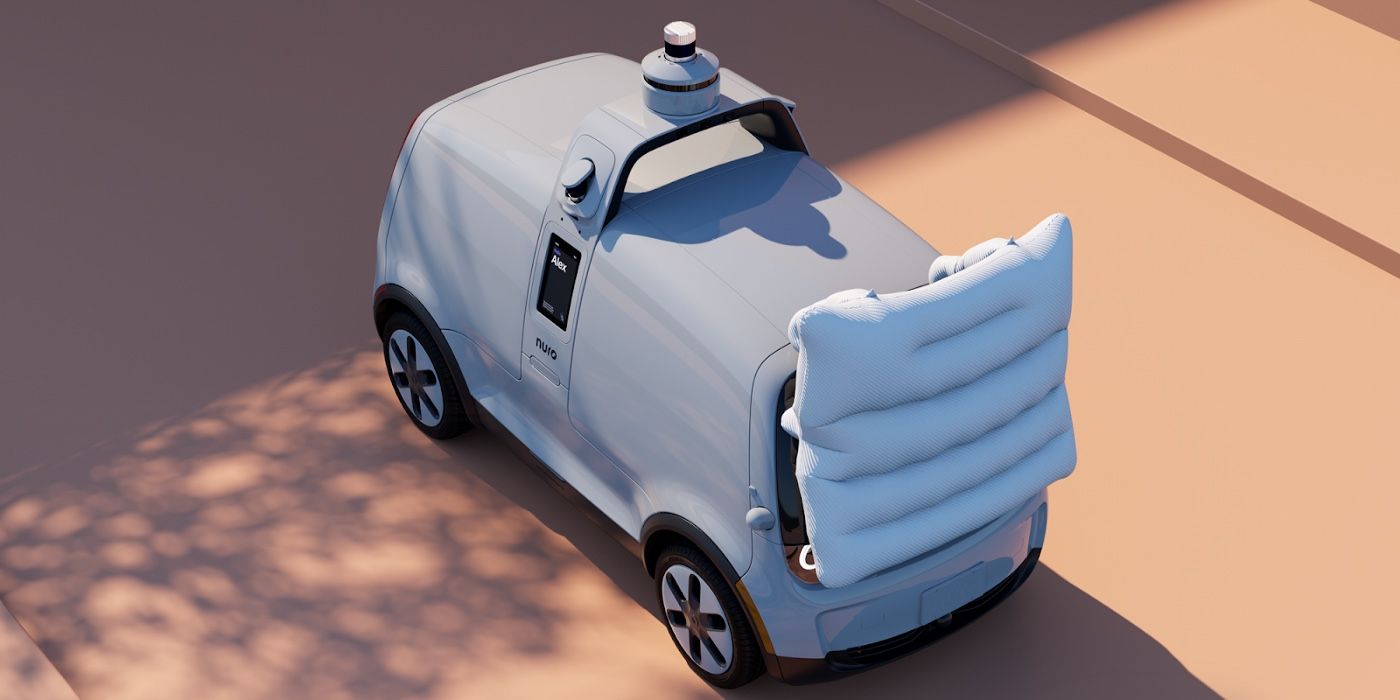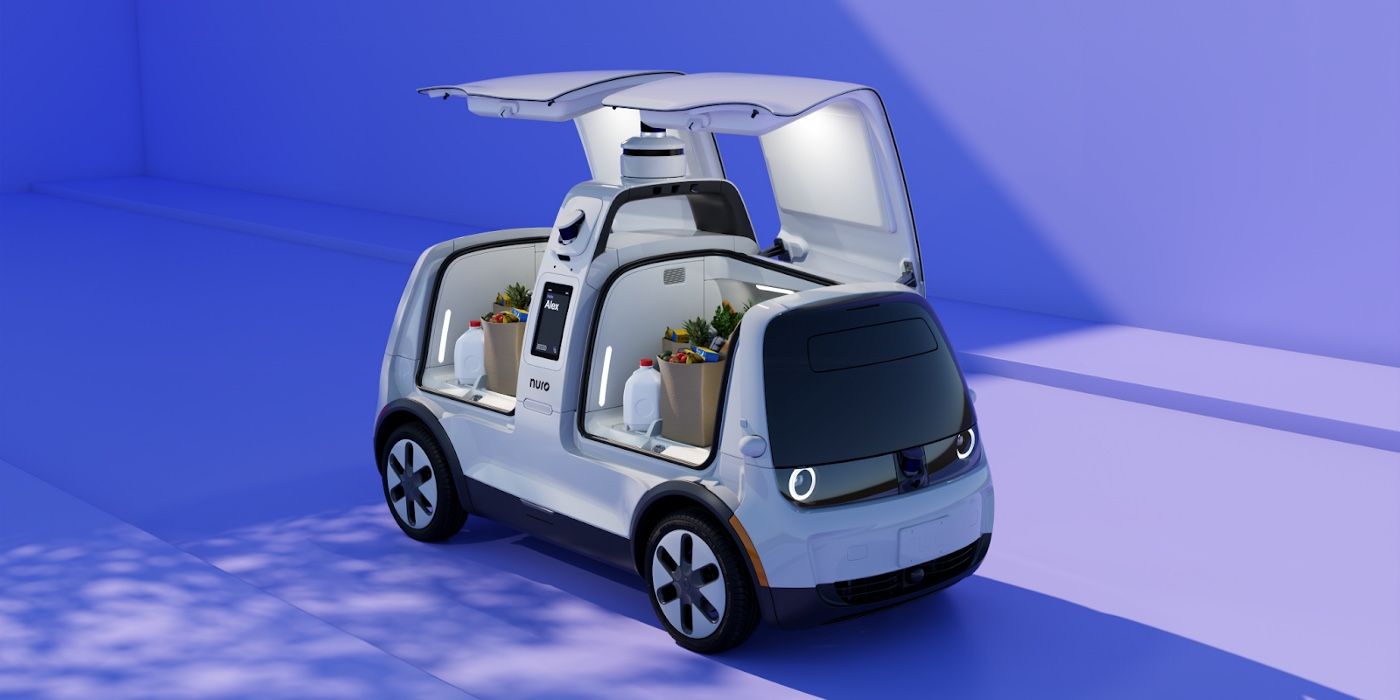The latest delivery robot from Nuro provides a smaller form factor and a unique new feature: an exterior, pedestrian airbag to prevent injuries in the case of a collision. Delivery robots aren't new, but they are rapidly progressing as companies find ways to improve on existing designs. This is Nuro's stab at an autonomous delivery vehicle, with prior models featuring a larger footprint and less storage capacity. The company's vehicles operate on public roadways just like normal cars, unlike some other robots which are designed to share sidewalks with pedestrians.
There are a few benefits to autonomous delivery vehicles that can offset the jobs lost in the automation of the shipping industry. For starters, electric delivery vehicles can significantly decrease emissions in cities with widespread adoption. Climate change is affected by the CO2 released from combustion engines, so the more electric vehicles on the road, the better. Some cities are already seeing the bleak effects of climate change, and there are even tools that can preview the disasters using AI. A lesser-known benefit of autonomous delivery is less traffic congestion on the roadways, since most delivery robots are small enough to drive on the shoulder, freeing up car lanes for drivers.
The next-gen version of Nuro's delivery robot, revealed in a press release, offers a few features to improve safety. The most recognizable safety addition, seen from the exterior of the robot, is the addition of the pedestrian airbag. While a traditional electric car would use an airbag on the interior to protect the driver and passengers, Nuro's robot takes a different approach, adding an airbag on the outside to protect bikers and pedestrians. The newest delivery robot has a roughly 20% smaller form factor, which the company hopes will reduce its footprint on the road. In the event of a collision though, the airbag is designed to limit potential injury.
A More Efficient Design
Without having drivers, Nuro says it can provide additional storage in an extremely small form factor. It has a simple job — make deliveries — but appears more functional than other concepts. The robot features separate compartments along with modular dividers and attachments. This allows the Nuro robot to separate foods that require staying warm or cold, since the delivery vehicle has heating and cooling tech. The robot can adjust its internal temperature from 22ºF to 116ºF, offering a convenient way to keep food fresh. Despite its small size, the Nuro robot can hold up to 27 bags of groceries for an outstanding 50o lbs of payload.
Altogether, Nuro's latest autonomous delivery robot looks to be a notable addition to the growing robotics industry. Unlike other robots in their design stages, the Nuro robot looks polished and consumer-friendly. It's part of the company's mission and was designed that way on purpose, as Nuro wants to make robots that fit in with their environment. The delivery system has now gotten form, function, and safety down, so it is poised to become a familiar robot face on the streets.
Source: Nuro


